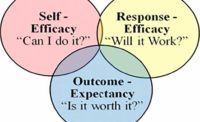Have you ever thought about how safety-related conversations often resemble an adult-child confrontation? One person holds another accountable for at-risk behavior, as in: "I saw what you did." Safety then becomes a 'gotcha' game, one that is reinforced by corporate rules and OSHA regulations. This heavy-handed approach only diminishes an employee's feelings of empowerment, importance, belonging and interpersonal trust. It's exactly the opposite of what is needed to encourage and support safety.
What we want to do is go beyond the accountability message that typifies adult-child relationships (and workplace safety): "We have rules here and this is what's expected of you." We want to increase that very important sense of personal responsibility.
Safety pros often interchange the words 'accountability' and 'responsibility.' I want to convince you that they are not the same. When you are held accountable, you are asked to reach a certain objective or goal, often within a designated time period. But you might not feel personally responsible to meet the deadline. Or you might feel responsible enough to complete the assignment, but that's all. You'll do only what's required and no more. In this case, clearly defined accountability leads to limited responsibility.
There are times, though, when you do more than what's required by the rules of accountability. You go beyond the call of duty. This is often essential when it comes to workplace safety and health. Accountability alone will not improve safety beyond the current performance plateau experienced by many companies. Workers need to act on a strong, broad sense of personal responsibility.
So the challenge for safety pros and corporate leaders is to build the kind of work culture that enables or facilitates personal responsibility for safety. An accountability system is needed that encourages personal involvement and commitment to safety. Psychological research on relationships between environmental conditions, such as an accountability system, and people's feeling states, such as personal responsibility, suggests five general ways to make this happen.
Decrease top-down controls
Workplace safety is often a confrontation between a rule enforcer and a rule breaker. The primary job of safety personnel is to check for worker compliance. Making safety a priority means increasing the enforcement of safety policies.But if you want to increase employees' responsibility for safety, you need to promote fact-finding, not fault-finding. An injury or near miss results from several causes, some having nothing to do with the person directly involved. Improving safety depends upon discovering all the factors contributing to injury potential. We can't do this if employees are unwilling or frightened to discuss an incident openly because they're afraid of being blamed or punished. Removing fear of failure is critical to developing internal feelings of personal responsibility.
Mistakes and human error never warrant punishment. Discipline typically stifles the openness and interpersonal trust needed to conduct a responsible incident analysis and derive an effective corrective action plan.
Increase feelings of empowerment
Employees need to be asked, "What will it take to make you feel more empowered or responsible for safety around here?" Seeking frank answers to this question and then struggling to make the changes requested will probably do more to increase employee involvement, commitment, and responsibility for safety than anything else.The type of accountability system you have in place to evaluate the safety performance of individuals, work teams, and the entire workforce influences whether people feel empowered and responsible to improve safety. Research and even common sense indicates that for an accountability system to promote personal responsibility it needs to:
- be proactive;
- promote the reporting of all injuries, near misses, and property damage incidents;
- distinguish between the journey (process goals) and the destination (purpose or vision);
- hold people accountable for numbers they can control;
- use recognition, rewards, and celebrations to shape process behaviors;
- consider environment, behavior, and personal factors in all incident investigations; and
- include daily audits of work practices and environmental conditions, as well as periodic assessments of perceptions and person states (through interviews, focus group meetings, and plant-wide surveys).
Help people feel important
When people have choices in a situation they feel more important. When their sense of importance is increased, they want to get more involved and make more choices. That's why it's important to first teach everyone the theory and principles behind a new process, and then help teams choose specific procedures for their work areas. Freedom of choice is motivating in itself, and promotes a sense of ownership for the methods and tools teams choose to use. This leads naturally to both personal and interpersonal responsibility to make the process work.Cultivate belonging and interpersonal trust
It seems intuitive, doesn't it, that building a sense of community or belonging among co-workers will increase their responsibility for industrial safety and health? People who feel a sense of belonging, trust, and win/win interdependency with their co-workers will also feel responsible for their co-workers' safety.A 'we-they' mentality inhibits trust building. People need to appreciate and respect each other's differences, and realize everyone in the system is interdependent and critical for the organization's synergistic success. But building the kind of belonging and trust needed to break down independent perspectives and 'we-they' barriers is an ongoing and never-ending process.
Building interdependent trust and belonging should be part of the mission statement for every corporate endeavor that involves people. It should influence almost every conversation we have with co-workers. It is a continuous journey--one that is essential to cultivate an organization of individuals and teams whose personal and shared responsibilities for safety and health are sufficient to achieve a Total Safety Culture.





